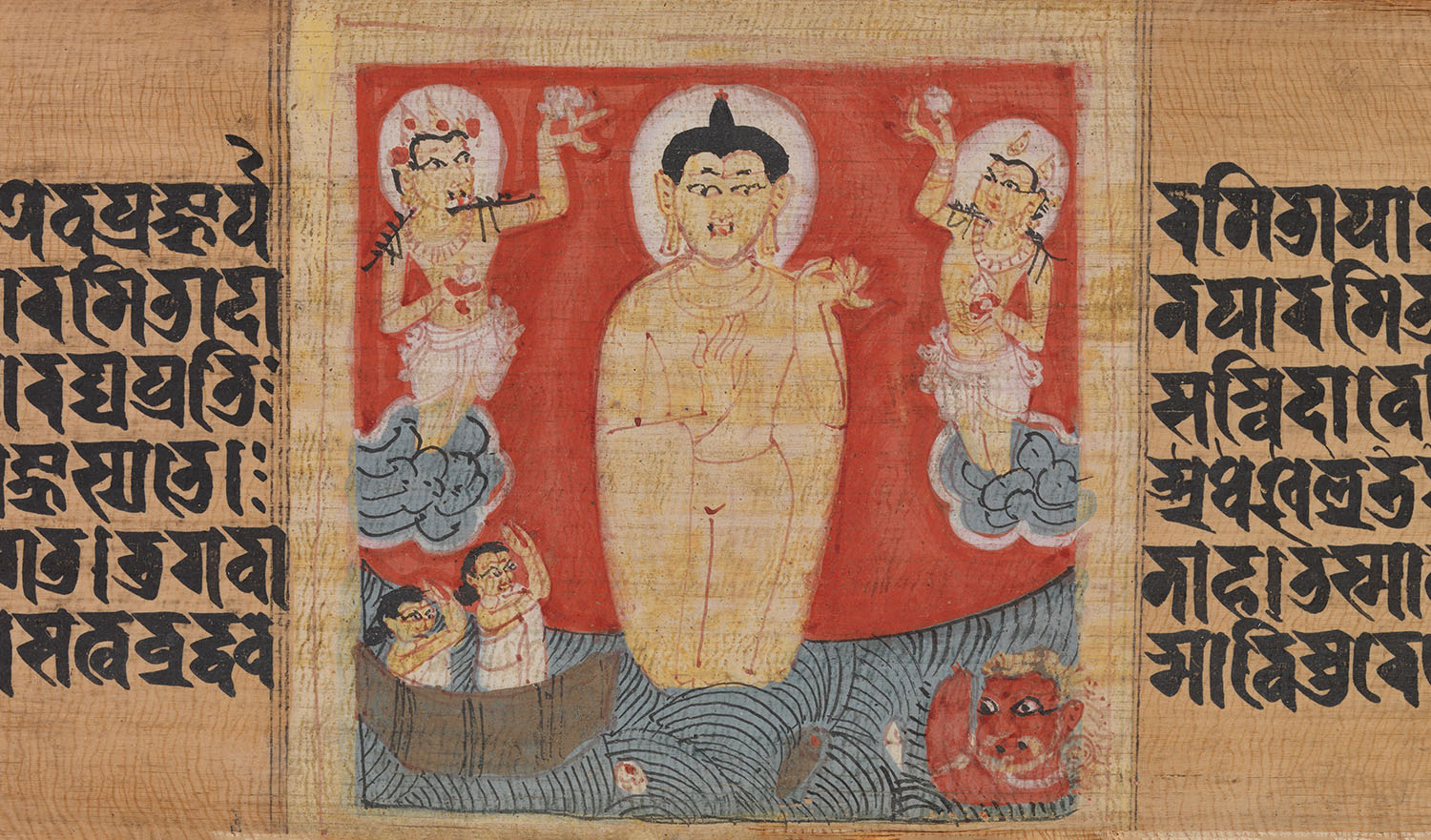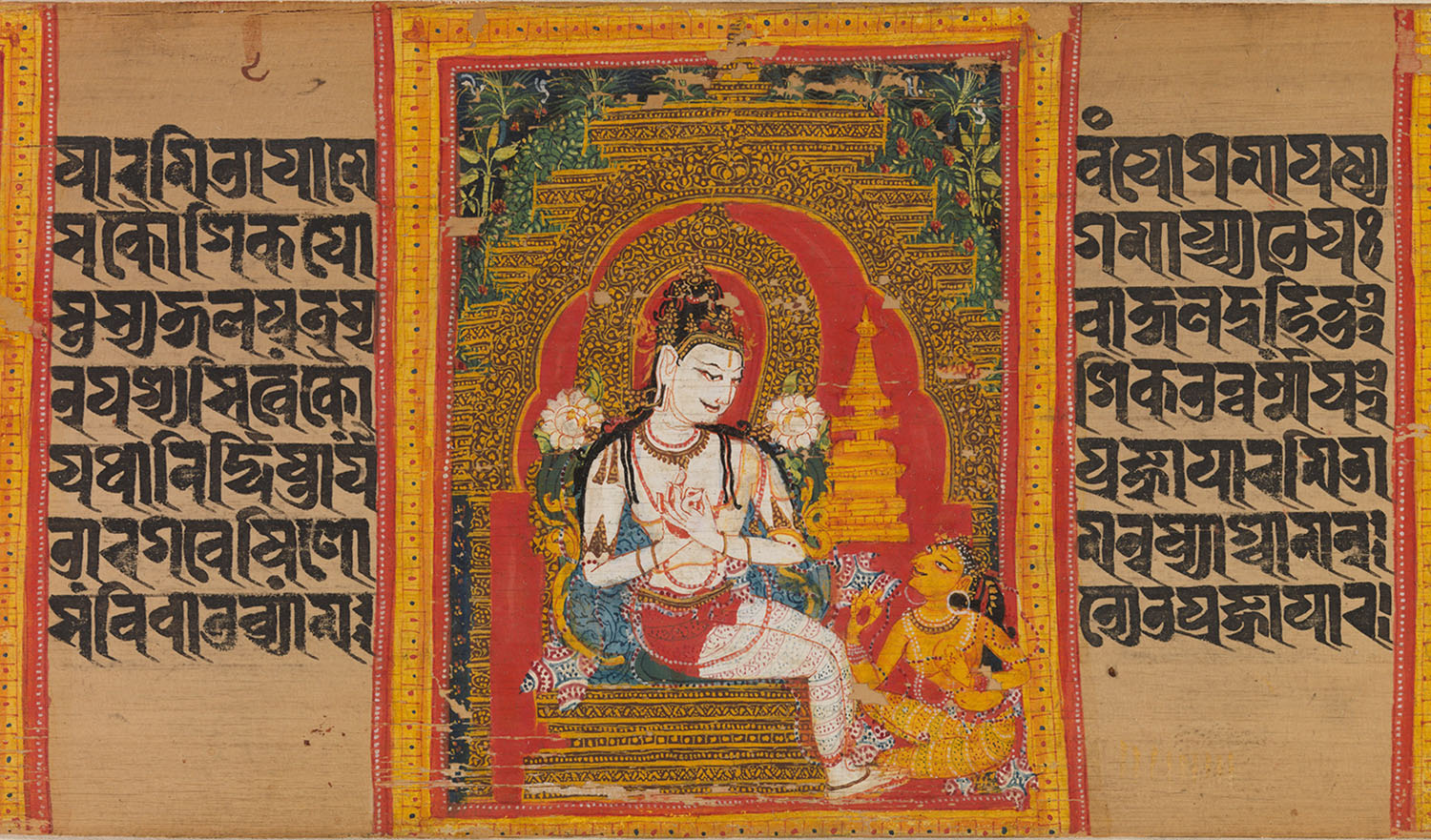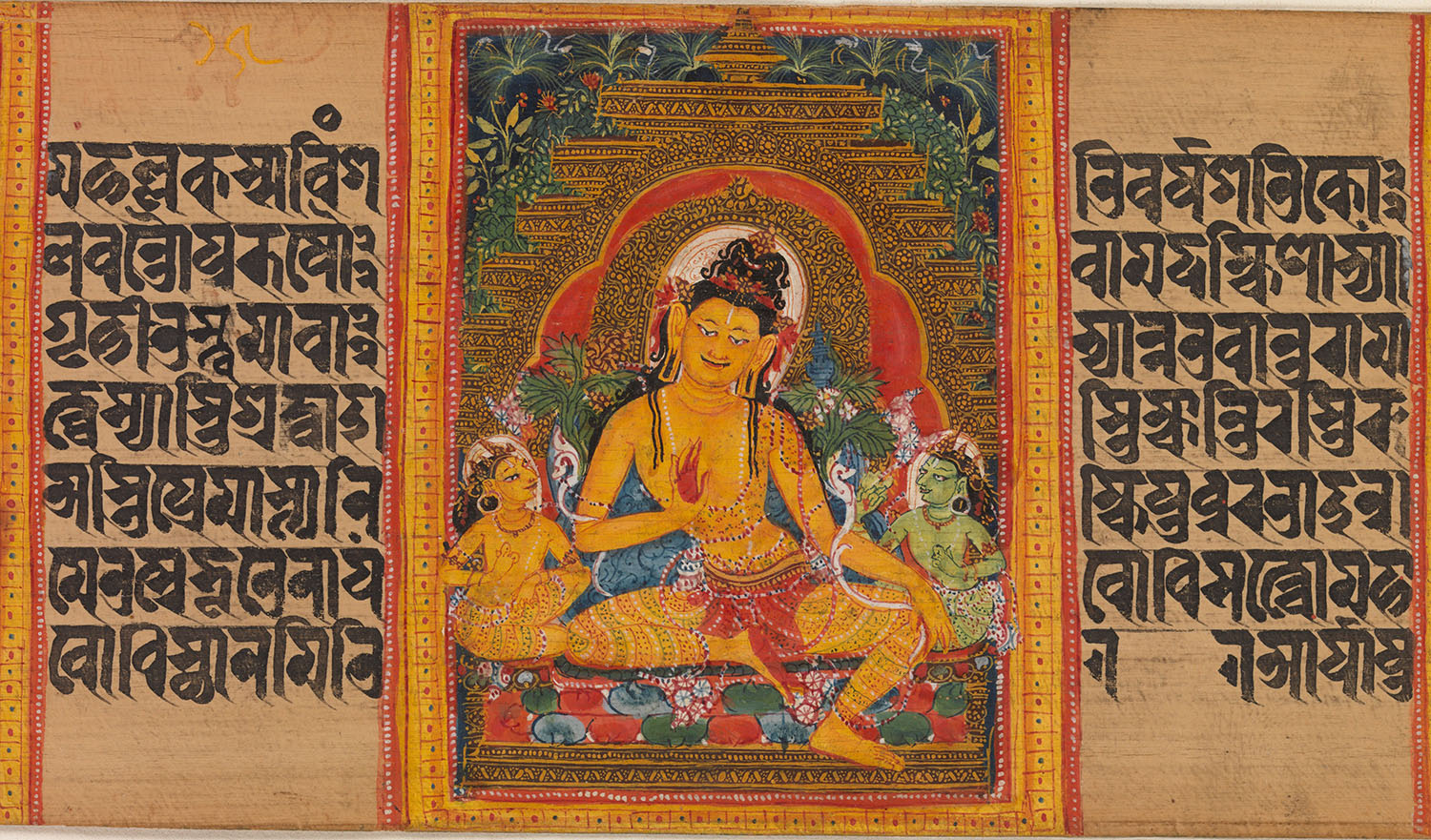Encyclopedia of Art > Articles
Pala Illustrated Manuscript Painting

Bound and painted palm-leaf books commissioned during the reign of the Pala Dynasty, illustrated manuscripts were a significant aesthetic mode in early mediaeval Bengal, along with bronze and stone sculptures and architecture. Through this period, the modern-day regions of Bihar, West Bengal and Bangladesh became possibly one of the last major sites for disseminating Buddhism in South Asia and beyond between the ninth and thirteenth centuries CE. Illustrated manuscripts from the period were thus informed by various aspects of Buddhist iconography and sacred textual traditions, such as the Ashtasahasrika Prajnaparamita (The Perfection of Wisdom in Eight Thousand Lines) or episodes from the Jataka tales. While they owed the evolution of their artistic style to previous models like the Ajanta cave and mural paintings of the time, they also marked new ways of developing the miniature painting tradition in the Indian subcontinent.
Apart from sites occupied by the Pala Dynasty, especially centring on Nalanda and Kurkihar, and the Varman Dynasty to its east, similar illustrated manuscripts have been found in places like Nepal, Tibet and Southeast Asian states like modern-day Burma and Thailand, possibly taken there by Buddhist monks and scholars. Many of these manuscripts were found with thickly daubed layers of vermillion, sandalwood paste, oil and milk on the covers, suggesting that they were considered to be personal objects of devotion and worship rather than books to be read for leisure.
Talipot palm leaves were used for these manuscripts, cut to sizes about five or eight centimetres wide and fifty to fifty-five centimetres in length, smoothened with a stone and primed with a thin layer of white. They were strung together with cords and usually bound within varnished wooden boards, although in some cases ivory or copper was used. The text was inscribed on the palm leaves with a careful kutila (“hooked”) script and gaps were left for the paintings to be filled in later, usually in oblong spaces of 5.5 centimetre x 7.5 centimetre area. Most manuscripts tended not to have illustrations, and when they did they were arranged usually in groups of three to a page: placed either at the beginning, the middle of the text or at the end.
Black or red outlines were usually sketched first to give the figures a marked lineament. These were usually filled in with solid colours, although some mixing of the organic colours could be seen in depictions of skin textures. The colours were derived from mineral sources and followed a process of extraction and grinding that was similar to the one employed for the Ajanta paintings. Typical colours included white, yellow, blue, vermilion, green and black. The colour schemes and iconographies were defined by sacred texts and practices in the Buddhist monasteries where they were made. Red ochre was used to make the final sketch, while black was applied to define the eyes and features of the face.
While early instances of manuscript paintings show multiple figures somewhat crowding within the frame, later examples showed a more relaxed approach to composition, with flowing lines and increased plasticity in the figures, especially in contrast with sculptural works. Tonally flat colours were used for backgrounds, with figures fixed on singular planes. Faces were usually depicted in three-quarter views, although the Buddha was presented frontally. The roundness and volume of the figures were usually highlighted with transparent applications of dark tones of colour on the outlines.
Scholars have argued that the tradition of manuscript illustration saw at least two variations within the style, loosely defined by their locations in the north or south of Bengal and Bihar. The former was also known as the “Varendra” style and was situated in the Magadhan centres of modern-day Bihar, such as Nalanda. Illustrations executed in this style usually bore hard lines and ornate compositions. Sometimes, figures of donors or patrons and their family members were painted directly onto the manuscript, usually just beyond the central frames of the main illustration.
Archaeological sites in the Munshiganj district in modern-day Bangladesh, dating to the eleventh–twelfth centuries CE, led to the recovery of two manuscripts in the southern style, also known as the “Vanga” style. One features the complete text of the Ashtasahasrika Prajnaparamita and the other one a set of twenty-two illustrated folios of the same text in another, incomplete manuscript set, now lodged at the Baroda Museum and Picture Gallery in India. The southern style is marked for the simplicity of its pictorial style, minimal decorations and bold application of tonally flat colours. The manuscripts were written in a proto-Bengali Gaudiya script, rather than the kutila script preferred in the north.
Many manuscript painting workshops in the region were disrupted towards the end of the twelfth century, when Turkic rulers began to establish their rule over present-day West Bengal, Bangladesh and parts of Bihar.
The Bharat Kala Bhavan and The Asiatic Society of Bengal hold some Pala manuscripts, particularly of the Prajnaparamita Sutra, dating back to the eleventh and twelfth centuries CE.
First Published: April 21, 2022
Last Updated: July 26, 2023




